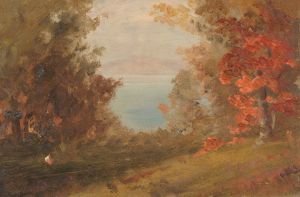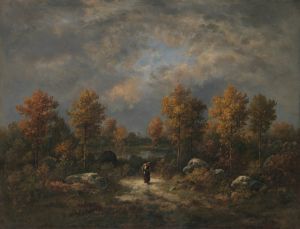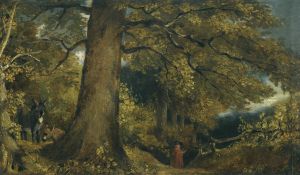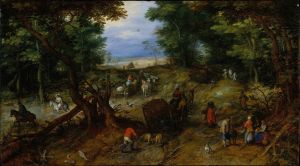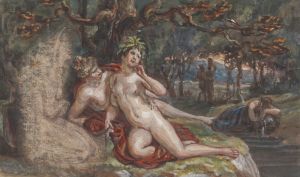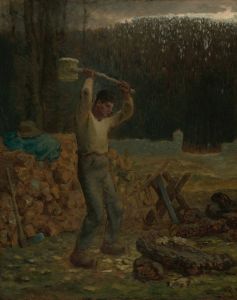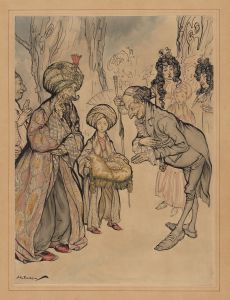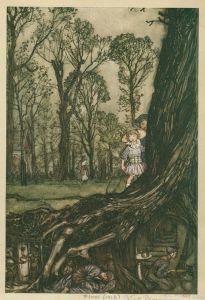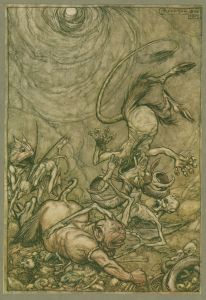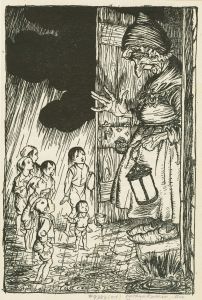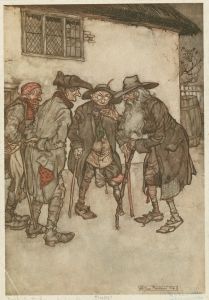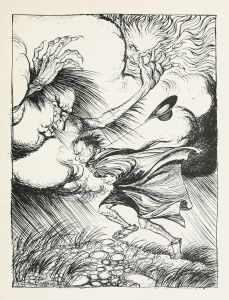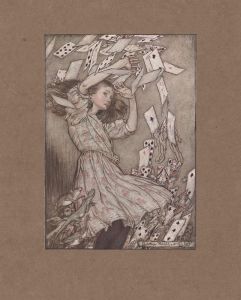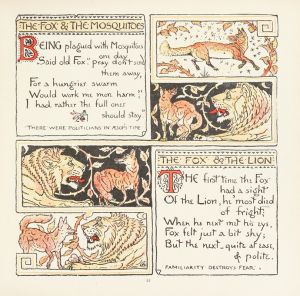
At the third sting the Fox screamed, and down went his tail between his legs
A hand-painted replica of Arthur Rackham’s masterpiece At the third sting the Fox screamed, and down went his tail between his legs, meticulously crafted by professional artists to capture the true essence of the original. Each piece is created with museum-quality canvas and rare mineral pigments, carefully painted by experienced artists with delicate brushstrokes and rich, layered colors to perfectly recreate the texture of the original artwork. Unlike machine-printed reproductions, this hand-painted version brings the painting to life, infused with the artist’s emotions and skill in every stroke. Whether for personal collection or home decoration, it instantly elevates the artistic atmosphere of any space.
Arthur Rackham was a prominent British illustrator known for his distinctive style and contributions to the world of book illustration during the late 19th and early 20th centuries. One of his notable works is the illustration titled "At the third sting the Fox screamed, and down went his tail between his legs," which is part of his illustrations for "Aesop's Fables."
Arthur Rackham was born on September 19, 1867, in London, England. He became one of the leading figures in the Golden Age of British book illustration, a period that spanned from the late 19th century to the early 20th century. Rackham's work is characterized by his use of pen and ink, combined with watercolor, to create detailed and imaginative illustrations that often depicted fantastical and mythical themes.
The illustration "At the third sting the Fox screamed, and down went his tail between his legs" is based on one of Aesop's Fables, a collection of stories attributed to Aesop, a storyteller believed to have lived in ancient Greece. Aesop's Fables are known for their moral lessons, often conveyed through stories featuring animals with human-like characteristics.
Rackham's illustration captures a moment from the fable in which a fox, after being stung multiple times, finally succumbs to the pain and retreats with his tail between his legs. This image is a testament to Rackham's ability to convey emotion and narrative through his art. His illustrations often included intricate details and a sense of movement, bringing the characters and stories to life.
Rackham's work on "Aesop's Fables" was published in 1912, and it is considered one of his significant contributions to children's literature. His illustrations for this collection, including "At the third sting the Fox screamed, and down went his tail between his legs," are celebrated for their ability to engage both children and adults, offering a visual representation that complements the moral lessons of the fables.
Throughout his career, Rackham illustrated numerous books, including classics such as "Peter Pan in Kensington Gardens" (1906), "Alice's Adventures in Wonderland" (1907), and "The Wind in the Willows" (1940). His work has been praised for its ability to capture the imagination and transport readers to fantastical worlds.
Arthur Rackham's legacy as an illustrator is marked by his unique style, characterized by a blend of realism and fantasy. His contributions to the field of illustration have left a lasting impact, influencing generations of artists and illustrators. Rackham passed away on September 6, 1939, but his work continues to be celebrated and appreciated for its artistic merit and storytelling ability.
In summary, "At the third sting the Fox screamed, and down went his tail between his legs" is a fine example of Arthur Rackham's illustrative talent, showcasing his ability to bring Aesop's timeless fables to life through his detailed and expressive artwork.





